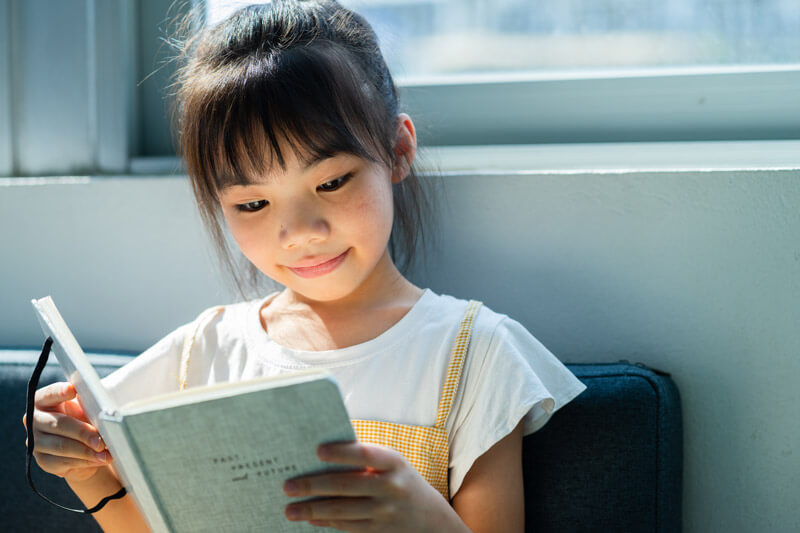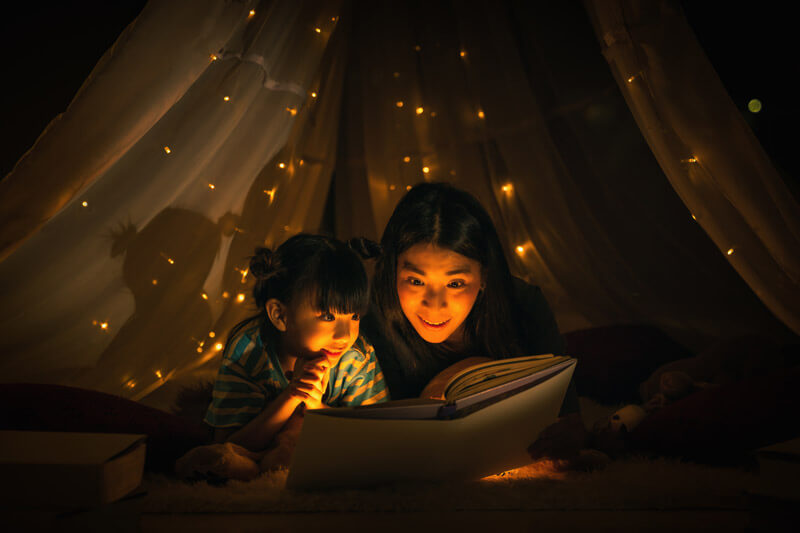Fairy tales aren’t just about magic spells or happily-ever-after endings.
They can carry deep emotional weight for children, especially those navigating fear, loss, or uncertainty.
A new study found that fairy tales can do far more than entertain. They’re powerful vehicles for learning, resilience, and even emotional recovery.
Stories, by design, weave lessons into wonder.
That’s why they’re increasingly being used in classrooms, therapy rooms, and homes to guide children through some of life’s hardest moments.
Therapeutic Fairy Tales
When kids face trauma or anxiety, it’s not easy to talk about feelings directly. Therapeutic fairy tales offer another path.
A character in a story can stand in for what a child is experiencing (abandonment, fear, sadness) without making it too raw.
Seeing those struggles resolved within a story helps children feel hopeful about their own challenges.
For example, a rewritten version of Cinderella could focus less on her magical transformation and more on her sense of being unwanted.
The story could show Cinderella building friendships and finding self-worth long before the fairy godmother arrives.
For a child grappling with abandonment, this twist reinforces that they are worthy of love, even without external rescue.
Stories for the Heart and Mind
Fairy tales don’t just work on the emotional level.
They also spark intellectual growth. Listening to and retelling stories strengthens language, memory, and creativity.
The review found that regular exposure to fairy tales can improve vocabulary and even executive function—things like attention and problem-solving.
A tale like Goldilocks and the Three Bears can be reshaped to highlight self-control.
Instead of a reckless girl barging into a house, Goldilocks could experiment with choices, learning which ones feel “too much”, which feel “too little”, and which feel “just right”.
For a child struggling with emotional regulation, the story becomes a playful way to practise balance.
Bonding Through Storytelling
There’s something timeless about a parent reading a fairy tale aloud. That shared ritual creates a sense of warmth and belonging.
Beyond the bonding, families who read and discuss stories at home give children an emotional toolkit that lasts.
Kids learn to put words to feelings, see situations from other perspectives, and process complex emotions in small, manageable doses.
Take The Three Little Pigs. Traditionally, it’s about resilience and clever planning.
Retold as a family story, it could also explore themes of sibling support—showing the pigs building not just houses, but trust in each other.
For children with insecure attachments, the story emphasises that family bonds can weather storms when they stick together.
Tailored Tales for Real Needs
One of the most interesting insights from the review was how adaptable fairy tales can be.
Therapists often reframe traditional stories or invent new ones to address specific struggles.
A child dealing with bullying might benefit from a Little Red Riding Hood who outsmarts the wolf not through fear but through courage and seeking help.
Metaphors allow kids to project their feelings onto a character, which makes overwhelming emotions easier to explore.
Instead of confronting a child with “You feel abandoned”, a story about a lost bird searching for its flock gives the child space to say, “That bird feels like me.”
Fairy tales also have a place beyond the home and therapy office.
In schools, teachers can use stories to encourage not only literacy but also moral reasoning and empathy. A classroom discussion about why a character chose kindness over revenge, for example, becomes a safe rehearsal for real-world choices.
Teachers could use a retelling of Jack and the Beanstalk to spark conversations about greed versus generosity.
Does Jack really need to take everything from the giant? Could he have chosen differently?
These questions help kids practise critical thinking while also reflecting on their own values.
Why Fairy Tales Are More Than Just Fun
The world children grow up in today can feel overwhelming.
Family changes, social pressures, and even global uncertainty weigh on small shoulders. What makes therapeutic fairy tales especially relevant is their accessibility.
You don’t need to be a trained therapist to use them. Parents, teachers, and carers can all weave these stories into everyday life.
And because they’re short, simple, and emotionally rich, fairy tales slip easily into bedtime rituals, classroom lessons, or quiet therapy moments.
They can be adapted endlessly to meet the emotional needs of the moment.
Therapeutic fairy tales are not about sugarcoating pain. They are about giving children a safe, imaginative space to confront it.
As the review reminds us, stories can act as gentle pathways toward healing, self-understanding, and resilience.
When we retell or reshape tales with emotional growth in mind, we’re not just passing down folklore—we’re handing children a flashlight to navigate their inner worlds.
Sometimes, the right story at the right time can be as powerful as any therapy session. And the best part? Anyone can tell one.
Disclaimer: The information provided in this article is for informational purposes only and should not be considered as medical advice from Motherhood. For any health-related concerns, it is advisable to consult with a qualified healthcare professional or medical practitioner.
For more insightful stories and fun recipes, stay tuned to Motherhood Story!











